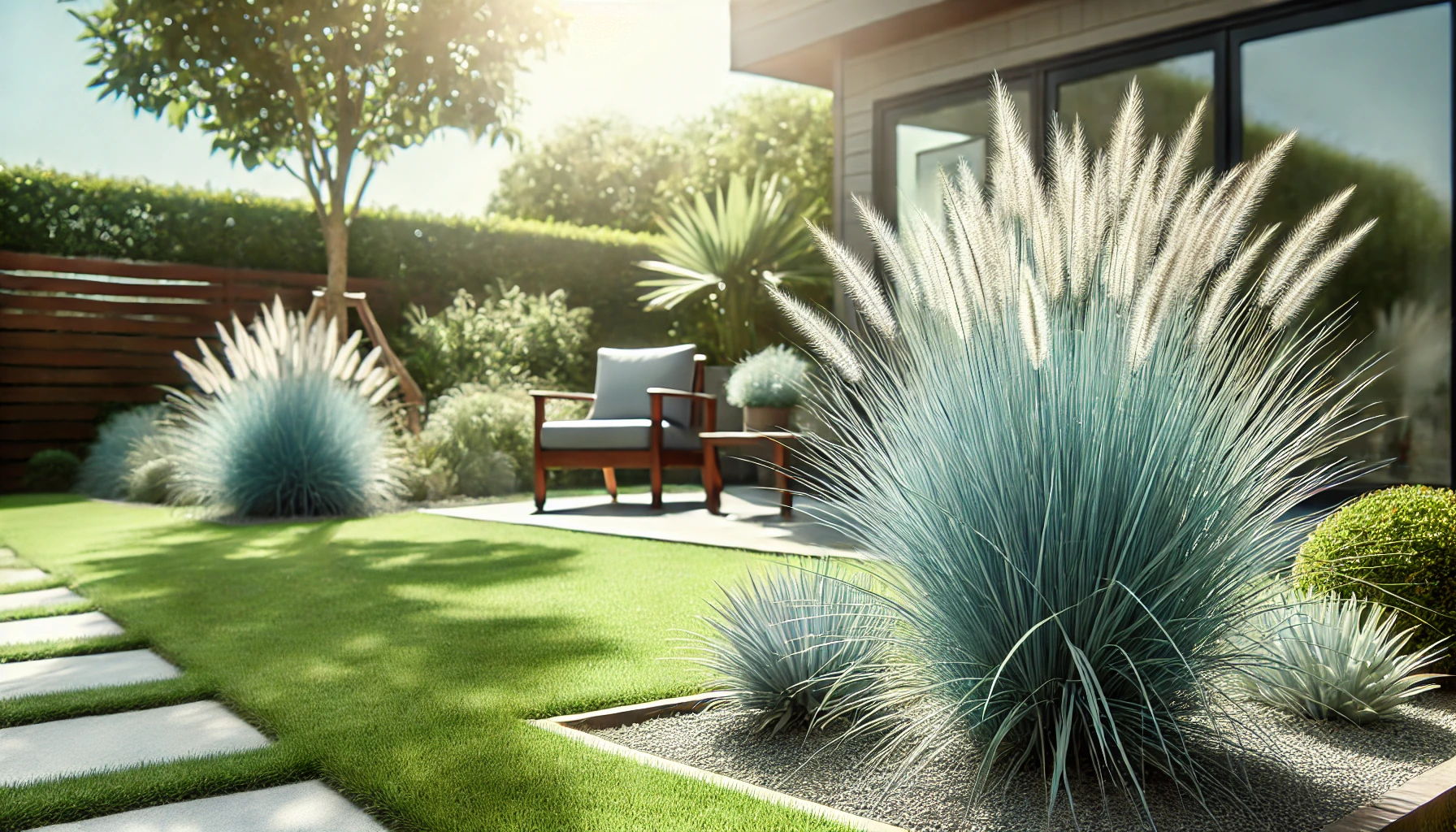
Blue Fescue, formally known as Festuca glauca, is a popular ornamental grass known for its striking blue-gray foliage and compact, mounding form. Typically growing to a height of 6-12 inches and spreading up to 12 inches, this versatile plant adds a unique texture and color to gardens and landscapes.
History and Ideal Growing Conditions
Originating from Europe, Blue Fescue has been cultivated for its ornamental value. Its attractive foliage and hardy nature make it a favorite in garden designs around the world. Ideal growing conditions for Blue Fescue include well-drained soil and full sun to partial shade. It thrives in USDA hardiness zones 4-8 and can tolerate a range of soil types, from sandy to loamy, as long as there is good drainage.
Toxicity and Pets
Blue Fescue is considered non-toxic to pets, making it a safe addition to gardens and landscapes where curious cats, dogs, or other animals might roam. Its dense, tufted foliage is generally unappealing to pets, reducing the likelihood of them ingesting it.
Best Practices for Caring for Blue Fescue
Caring for Blue Fescue involves understanding its basic needs and providing optimal conditions for growth. This section covers watering, humidity, soil, light, and temperature preferences.
Watering and Humidity
Blue Fescue prefers moderate watering. While it is drought-tolerant once established, regular watering helps maintain its vibrant color and healthy growth. Water deeply but infrequently, allowing the soil to dry out between waterings. Avoid overhead watering to prevent fungal diseases. Humidity is not a major concern for Blue Fescue, as it adapts well to various levels, but ensuring good air circulation around the plant can help avoid moisture-related issues.
Soil, Light, and Temperature
Blue Fescue thrives in well-drained soil. Sandy or loamy soils are ideal, and adding organic matter can enhance soil structure and fertility. This grass prefers full sun to partial shade; however, more sun exposure leads to more intense foliage coloration. It can tolerate a range of temperatures but performs best in cooler climates. In hot, humid regions, provide afternoon shade to prevent stress.
Common Problems and Remedies
Despite its hardy nature, Blue Fescue can encounter a few common problems:
- Fungal Diseases: Ensure good air circulation and avoid overhead watering to prevent fungal issues.
- Browning Foliage: This can result from drought stress or poor soil drainage. Adjust watering practices accordingly.
- Pests: Blue Fescue is generally pest-resistant but occasionally attracts aphids. Use insecticidal soap if needed.
Propagation and Benefits
Propagation of Blue Fescue is typically done through division. In early spring or fall, dig up an established clump and separate it into smaller sections, each with roots and foliage. Replant these divisions in well-prepared soil.
The benefits of Blue Fescue extend beyond its visual appeal. It is low-maintenance, drought-tolerant, and deer-resistant, making it an excellent choice for sustainable gardening. Additionally, its compact size and unique color make it a versatile plant for borders, rock gardens, and container planting.
Final Thoughts
Blue Fescue is a delightful addition to any garden, providing year-round interest with its distinctive blue-gray foliage. Its low-maintenance nature and adaptability make it a favorite among gardeners of all skill levels. With proper care and attention to its growing conditions, Blue Fescue can thrive and add a touch of elegance to your landscape.



